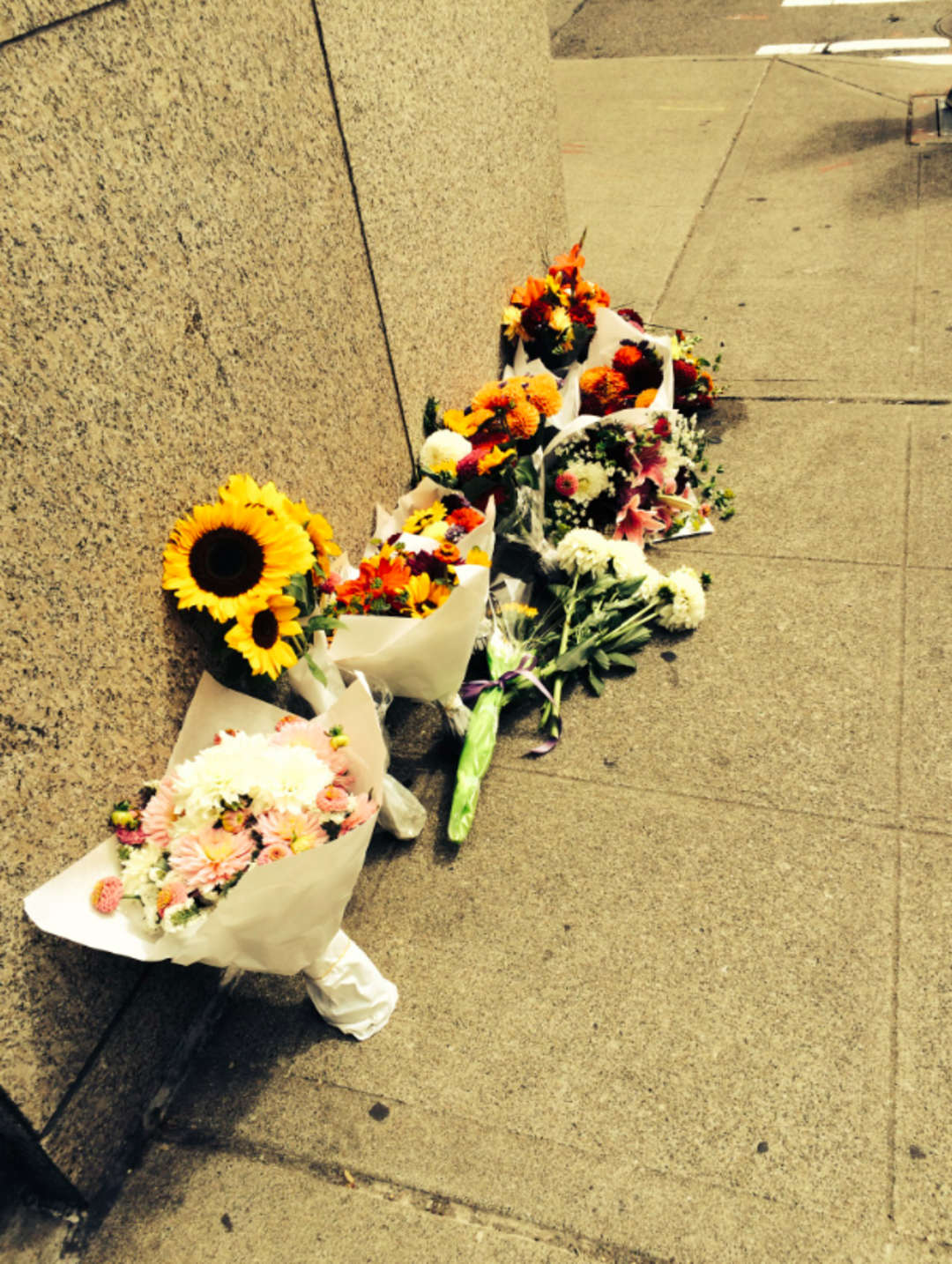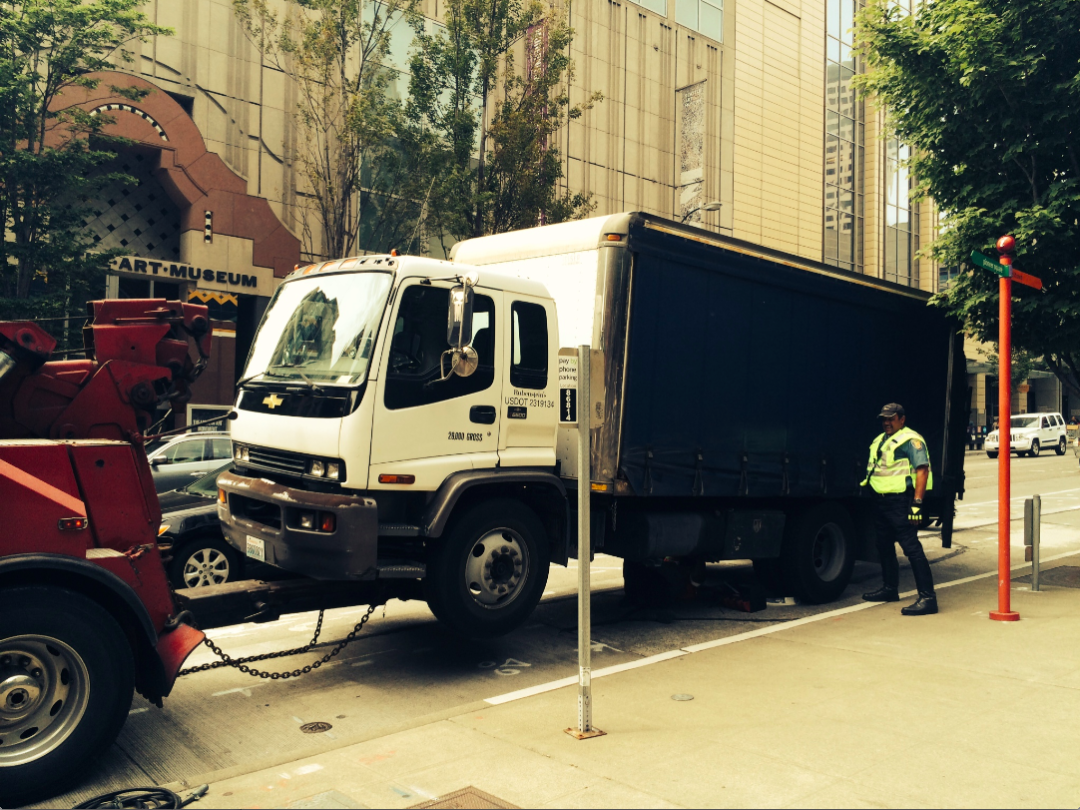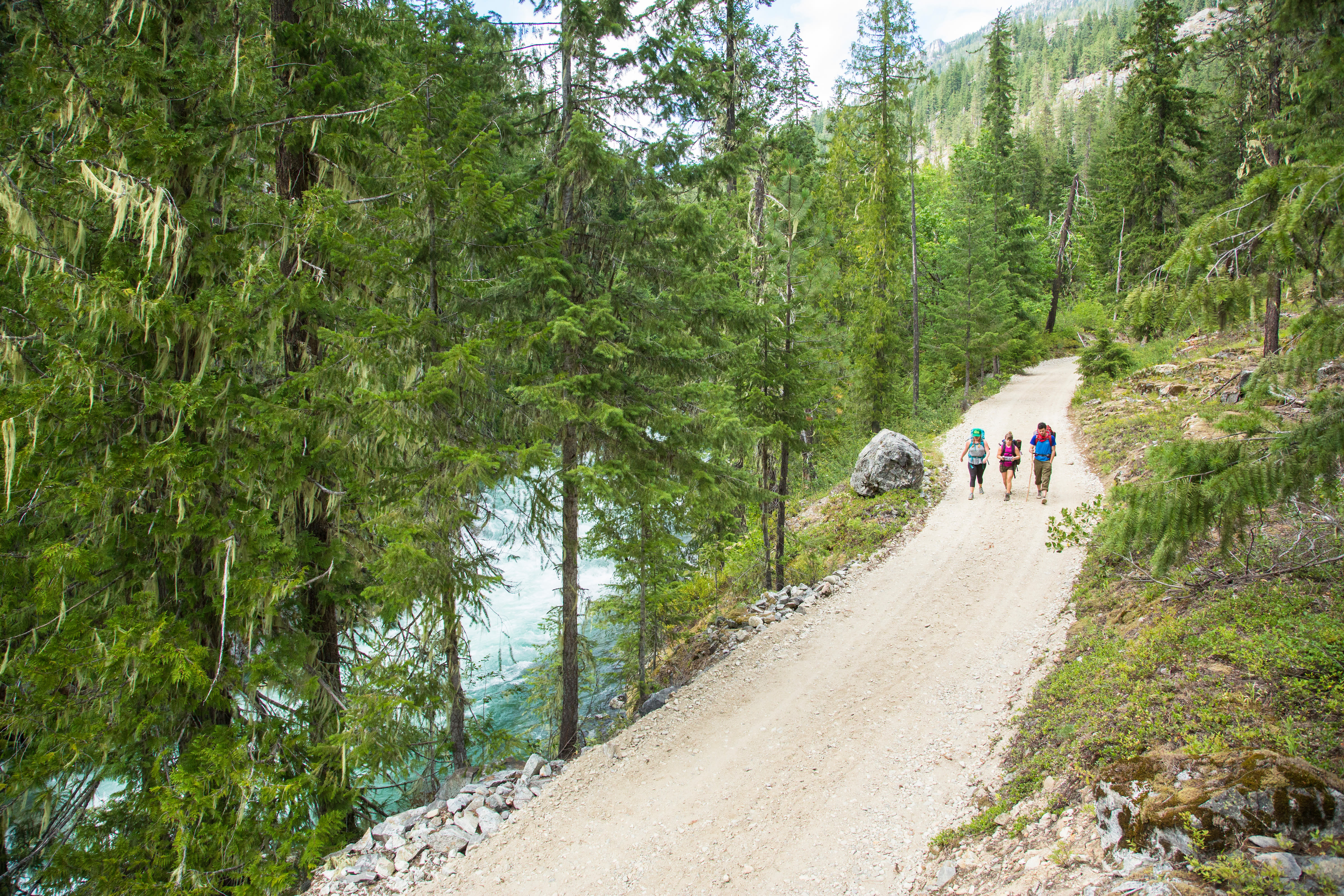Death on 2nd Tragically Precedes New Protected Bike Lane Project

As Q13 first reported earlier today, a female bicyclist was killed by a truck driver at 2nd & University in downtown Seattle this morning.
(SPD has updates here; the SPD says the truck driver was a man in his 40s and the Seattle Fire Department reports that the biker was in her 20s or 30s.)
The biker, heading south on the one-way street in the bike lane located on the east side of the street, was struck by a truck as the truck turned left from the vehicle traffic lane immediately adjacent to the bike lane to its west. (The 2nd Ave. bike lane is sandwiched between a parking lane to the east and three traffic lanes to the west, there's another parking lane on the far west side of the street, which converts to a bus lane in the mornings and evenings during rush hour.)
"It's highly likely this would have been prevented, and in one week it wouldn't have happened," says Brock Howell, Policy & Government Affairs Manager for the Cascade Bicycle Club. He was on the scene this afternoon as boquets of flowers were accumulating at the northeast corner of 2nd & University and the SPD was towing away the truck that hit the biker.

Howell, whose group has been pushing for a protected bike lane on 2nd Ave. for several years, was referring to news that PubliCola broke last week, the now poignant fact that a protected bike lane, complete with separate signals (as last week's Fizz item was titled), had been fast-tracked for installation by September 8. Initially the $1.2 to $1.5 million protected bike lane was scheduled to go in later in the month (or even in October) just in time for the city's new bikeshare program.
There are several dangerous aspects on 2nd Ave. for bikers, and today's death tragically demonstrates the main flaw: the single signal allows cars to turn from the furthest left traffic lane without protecting bikers, giving the situation over to the gray area of yield laws (who's there first) and often putting bikers in car and truck drivers' blind spots; though you'd think drivers would be aware of bikers traveling in the adjacent bike lane.
There have been 60 collisions involving bicycles on Second Avenue. Fifty percent of the collisions involved vehicles turning left at the crosswalk.
Other notorious problems on 2nd for bikers include: auto traffic simply sliding over and into the parking lane located next to the bike lane, and parked cars pulling out of the parking lane; bikers getting "doored" by cars in the parking lane; and finally, the parking garage exits, including from Benaroya Hall right by the accident site, that empty out onto 2nd Ave.
As the SDOT website (now eerily) had described the need for the protected bike lane:
Second Avenue was chosen because ... the current one-way bike lane is not performing as expected due to grade, proximity to parked cars, and turning conflicts. In addition, over the past four years, there have been 60 collisions involving bicycles on Second Avenue. Fifty percent of the collisions involved vehicles turning left at the crosswalk.
The protected two-way bike lane comes with smart improvements: the parking lane and the bike lane are switching places; additionally, the bike lane will have a constructed buffer; and finally, there will be separate signals, one governing the bike lanes and one governing car, truck and bus traffic. Those signals will be synchronized so that when bikes have the green, cars will have a red—and won't be able to make risky left turns anymore.
The photo below, taken this afternoon, shows the pending separate signal configuration.
(Encouraged by SDOT's decision to go ahead with a separate bike signal, we actually took a celebratory photo at the exact same spot last week, when SDOT first installed the new setup).

Protected bike lanes are a relatively new innovation in North America and didn't exist at the time Seattle put together its Bike Master Plan (BMP) in 2007. The idea for a protected lane on 2nd Ave. was added to the plan during the five-year BMP update, which the the city council finally approved earlier this year. Cascade's Howell credits Mayor Ed Murray for fast-tracking the 2nd Ave. project.
Murray announced the protected bike lane in May. We have credited Murray's new SDOT director Scott Kubly for adding the separate signal for bicyclists, like the one on Broadway on Capitol Hill.
A month ago, on July 31, a woman was struck and killed by a truck driver in a hit and run at 9th and James on First Hill. The SPD did not believe any arrest had been made in that incident to date, though the driver has been identified.
The state legislature passed a vulnerable users law in 2011 which increased the punishment when negligent drivers injure or kill a pedestrian or bicyclist. Previously, there had been no specific traffic infraction for that situation and negligent drivers simply had to pay the traditional traffic infraction fine of up to $250. The new pro-ped and biking law sponsored by state Rep. Joe Fitzgibbon (D-34, W. Seattle, Burien) and Sen. Adam Kline (D-37, S. Seattle) created a new infraction for cases when peds and bikers were hurt or killed that increased the fine to at least $1,000—and up to $5,000.
Rep. Fitzgibbon says he doesn't know how many times the new infraction has been used, but says he's thinking about strengthening the law. Fitzgibbon noted a recent case in Kenmore where the city settled for a $175 fine in a biker's death because Kenmore's prosecuting attorney didn't feel they could meet the vulnerable users law standard even though the driver failed to yield at a crosswalk, Seattle Bike Blog reported in July.
Photos by Josh Feit




